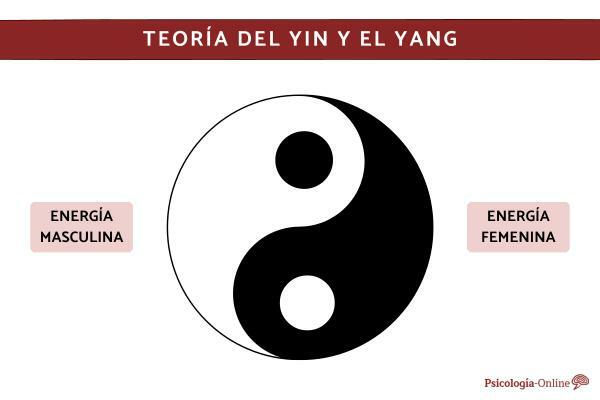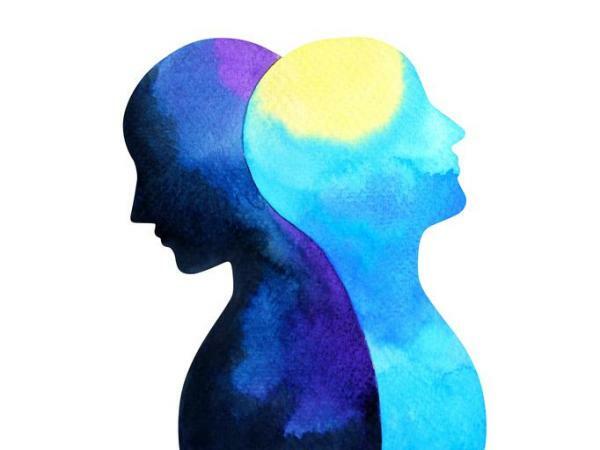
It is possible that at some point in your life you have seen the symbol of Yin and Yang, however, you may not know this theory in depth. It is an ancient philosophy, so simple and at the same time so complex, that it has been present in humanity for thousands of years. His concepts are a rich source of knowledge and reflection, since he starts from the principle that the entire universe is made up of two opposing forces that balance in harmony.
In this Psychology-online article we will explain what is the theory of Yin and Yang and its meaning, one of the most powerful philosophies that, according to Taoism, encompasses all the forces of the universe. We tell you what each part symbolizes, what are the principles of the theory and how it is applied in fields such as medicine and religion.
Index
- What is the theory of Yin and Yang
- Symbolism of the parts of the Yin Yang
- Principles of Yin and Yang
- Yin and Yang Applications
What is the theory of Yin and Yang.
The theory of Yin and Yang is a Chinese philosophy that is based on the idea that everything in the universe is made up of two opposing forces, but complementary, known as Yin and Yang. The Yin is related to the feminine, the dark, the passive and the cold, while the Yang refers to the masculine, the light, the active and the warm.
The idea is that these two forces must be in balance for everything to work properly in the universe. In other words, the theory states that Yin and Yang are two opposing forces that complement each other, so must be in balance to achieve a harmonious life.
This postulate has its roots in ancient China, specifically, in Taoist thought. In fact, the concept of Yin and Yang is mentioned for the first time in the classic "I Ching" or "Book of Changes". This text dates from the 8th century BC. C and contains the philosophical wisdom and divinatory practices of that culture.
Symbolism of the parts of the Yin Yang.
The Yin-Yang symbolism is also known as the symbol of the Tai Chi and was invented in China about 600 years ago. c. It is a circle divided into two halves by a curved line that intertwines. One of the halves is black and represents the Yin side. While the other half is white and refers to Yang.
In the symbol, when the black and white parts intertwine, it makes reference to the harmonic balance between the two opposing forces. In addition, the small circles that are in each of the stripes mean that nothing is totally black or white and that nothing is absolute in the universe, but that the two parts always coexist.
Although Ying and Yang form an integrated whole, each of them has its own meaning. We explain it to you below.
what is yin
The Yin symbol is associated with the following meanings:
- represents the feminine energy, passive and receptive.
- It is related to the evening, darkness and the moon.
- It represents humidity coldness and the tranquility.
- It is related to nature, like valleys and the streams.
- Links with emotions and the subconscious.
what is yang
The Yang symbol is related to these meanings:
- It is associated with the masculine energy, active and expansive.
- It has to do with him day, light and sun.
- symbolizes the heat, dryness and agitation.
- It has to do with the mountains and the rivers.
- It represents the mind and the conscious.
Keep in mind that Yin and Yang are complementary concepts and not opposite, and that both are necessary to achieve harmony in all things. In short, the symbolism of Yin and Yang represents the paradox without absolutism, freedom without limits and the learning in change.

Principles of Yin and Yang.
For Taoism, the theory of Yin and Yang is based on the following fundamental principles:
- complementarity: Yin and Yang complement each other and need each other to form a whole. Neither can exist without the other.
- Interconnection: everything that exists in the universe is connected and affects the other part. Therefore, change in one part of the universe affects everything else.
- Mutability: all things are constantly evolving. Therefore, Yin and Yang transform into each other. A Yang state can become a Yin state, and vice versa.
- Balance: The ultimate goal of Yin and Yang theory is to achieve a proper balance between Yin and Yang. An excessive amount of one or the other can cause imbalance and disease, so they must always be in harmony. In this article we propose exercises to achieve mental and emotional balance.
- opposition relationship: these elements oppose each other, but at the same time they contain and complement each other. This relationship of opposition is what allows change and development.
Applications of Yin and Yang.
During the reign of the Yellow Emperor of China, about 2,000 years ago, the use of Yin and Yang was frequent in the medicine of the time, which is reflected in the first Chinese book on science medical. At present, this theory is still valid, since in traditional Chinese medicine Yin and Yang are used to explain the processes of the body and to diagnose and treat diseases.
Those who practice Chinese medicine believe that a Imbalance between Yin and Yang can cause illness, so it seeks to restore the balance to cure the patient.
In addition, the theory of Yin and Yang has great importance in the field of The philosophy and religion, since, for example, taoism considers her a fundamental part of his doctrine. In Chinese art, architecture and culture, it continues to be an essential part of social beliefs and customs, as well as in the training of some sports, such as martial arts.
In short, the theory of Yin and Yang is widely accepted and applied in different social fields, since it is even used to represent and understand cycles and processes in agriculture, with the aim of maximizing crop yields.

This article is merely informative, at Psychology-Online we do not have the power to make a diagnosis or recommend a treatment. We invite you to go to a psychologist to treat your particular case.
If you want to read more articles similar to What is the theory of yin and yang and its meaning, we recommend that you enter our category of Personal growth and self-help.
Bibliography
- Jaeger, Stefan. (2011). A geomedical approach to Chinese medicine: the origin of the Yin-Yang symbol. In "Recent Advances in the Theories and Practices of Chinese Medicine. Ed. Haixue Kuang Intech Open.
- Lee, Mitsuru, Kin-aki Kawabata, and Kiyotaka Tanikawa. Nations of time in ancient China and Japan. Publications of the Japan Astronomical Society, pp: 887–904.


